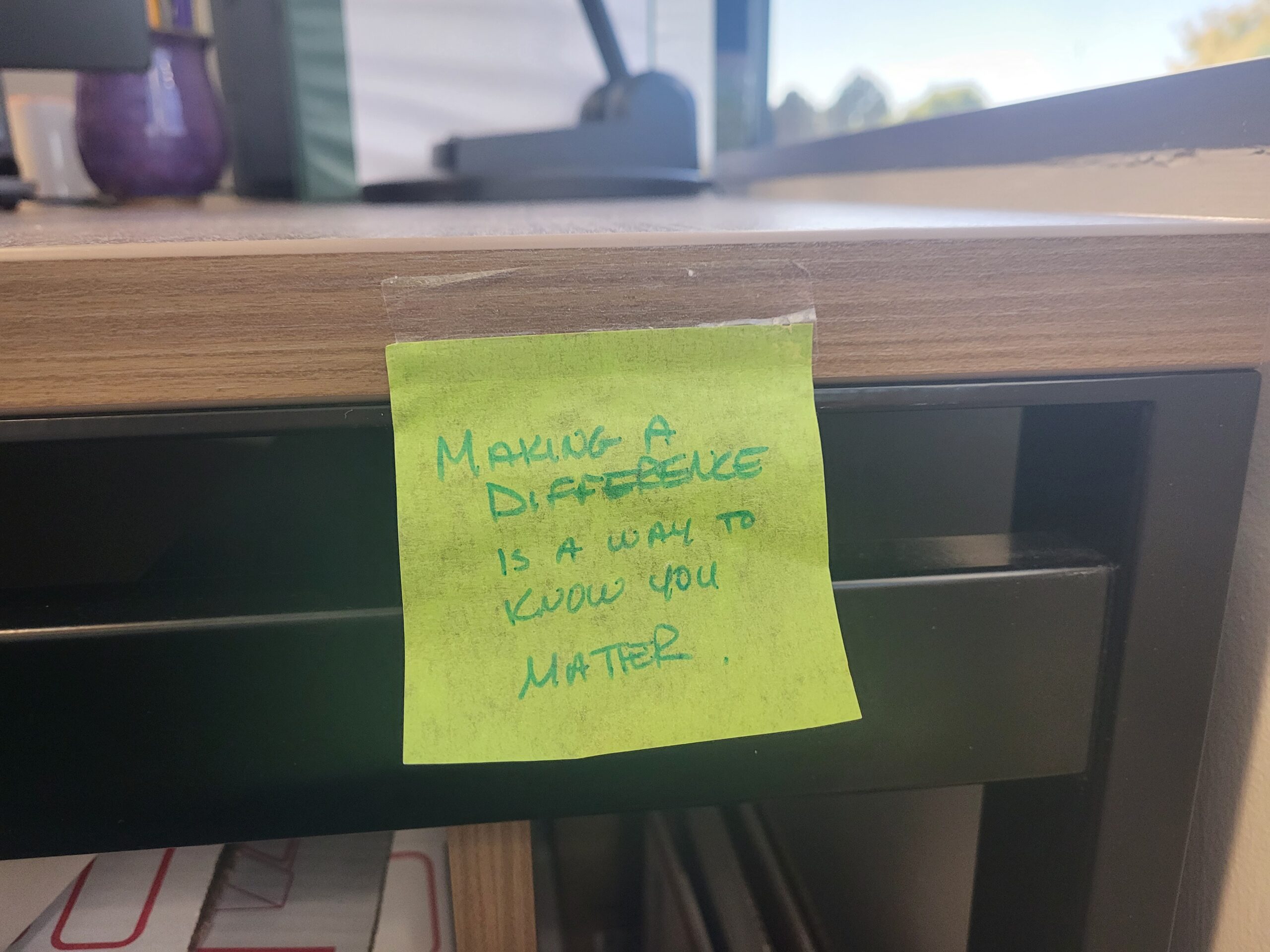Blog: Mattering: The Growing Volunteer Motivator

The sticky note on the side of my desk reads, “Making a difference is a way to know you matter.”
Uncharacteristically (and regrettably!), I didn’t write down which colleague or friend said that while on a conference call, but I know that, as soon as I heard it, I grabbed my sticky pad and wrote it down. Now, at some point every day, I catch sight of this little green square of paper that shares such a profound message.
When training nonprofit leaders, I often share that volunteers want to make a difference. Rarely have I gone deeper than the obvious impacts on solving problems in the community to explore what making a difference means on an individual level. Yet, this sticky note stares at me every day. “Making a difference is a way to know you matter.”
WHAT IS MATTERING AND WHY DOES IT MATTER?
The term “mattering” was coined in 1981 (by Rosenberg and McCullough), and it refers to our perception of personal significance in the world.
In recent years, the term has been applied to the motivation of Gen Z in the workplace. As these young adults enter the workforce, they are less willing than previous generations to do jobs that they didn’t care about, and this applies equally to volunteering. But it would be wrong to assume that only young volunteers are interested in mattering. Every volunteer wants to feel valued, whether a senior or teen. Placing mattering front and center in our volunteer engagement strategy can be a powerful tool to drive success – on all fronts.
Recent events, including the unprecedented number of protests, fueled by technologies that make it easy to mobilize large groups of people around such issues as racial justice, women’s rights, and climate change, have elevated the concept of mattering. Many more people have been driven to action by anger or guilt—both powerful motivators for transformational engagement. Some are angry about leaders who seem to ignore (or even facilitate) such issues as abuse of civil liberties. Others, potentially ashamed that they may have been complicit in a problem, feel the need to make amends. Since participating in marches is one way to take action on these feelings, volunteer engagement leaders have the opportunity to be aware of and leverage these emotional drivers.
SHOW THEM THEY MATTER
Of course, engagement should, first and foremost, be built around the desired outcomes for the community, as mission-fulfilment should be the primary driver. But the impact of volunteering on the volunteers themselves is growing in importance to organizations and, increasingly, funders too. Fortunately, mattering can be integrated into every aspect of a volunteer program.
- Recruitment: Focus communications not only on how the volunteer experience matters to beneficiaries but also to the volunteers themselves.
- Screening and Onboarding: When screening and onboarding volunteers, take the time to really understand and document what motivates them. Understanding their internal drivers and the skills they bring to a project may inspire additional ways that they can serve.
- Training: Engage volunteers in training other volunteers. Acknowledge and welcome the skills and experience that even new volunteers bring to the table – and consider how to integrate that into the training, thereby welcoming new perspectives and demonstrating that new volunteers bring with them assets that matter.
- Recognition: Communicate your appreciation for volunteers in large and small ways. Increasingly, volunteers value understanding the difference they are making as part of the volunteer community. While pins and parties can be nice, a simple shoutout on Instagram or a personal phone call of thanks from organizational leadership can be even more meaningful. Knowing they matter will grow the volunteers’ engagement in the short term and secure their support (perhaps as donors) in the long term.
The upshot is: mattering matters!
It lies at the very heart of moving beyond temporary transactional volunteerism to enduring transformational civic engagement, so it’s worth investing time to review at your engagement practices through the lens of mattering.
Beth Steinhorn is President of VQ Volunteer Strategies and co-editor of Transforming Disruption to Impact: Rethinking Volunteer Engagement for a Rapidly Changing World, out now from Amplify Publishing. To learn more, read the chapter by Natalye Paquin, President and CEO of Points of Light. Visit the Transforming Disruption to Impact website to read additional posts by the book’s co-editors.
